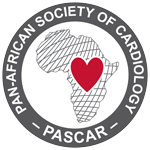Introduction of Republic of Belarus as a candidate for participation in SSL
In 2016, the Belarusian Scientific Society of Cardiologists and the Belarusian Society of Endovascular Surgery and Interventional Cardiology have initiated the process of joining the European initiative Stent Save a Life. The goal – to improve the quality of interventional care for patients with acute coronary syndrome (ACS) and the use of best European practices in our daily work.
The Republic of Belarus is an Eastern European country with a current population of 9,481,000 approx. and a very high number of individuals suffering from Ischemic heart disease with the current prevalence rate of 10,471.1/100,000.
Approximately 15000-15500 acute MI cases are registered every year, out of which 55-65% with STEMI. While the registered acute MI mortality adding up to 15%.
The first PCI in Belarus was performed in 1989. For many years the number of PCI procedures was extremely low. During last ten years the quantity of PCI was increased up to 733 per million in 2015 (Fig. 1).
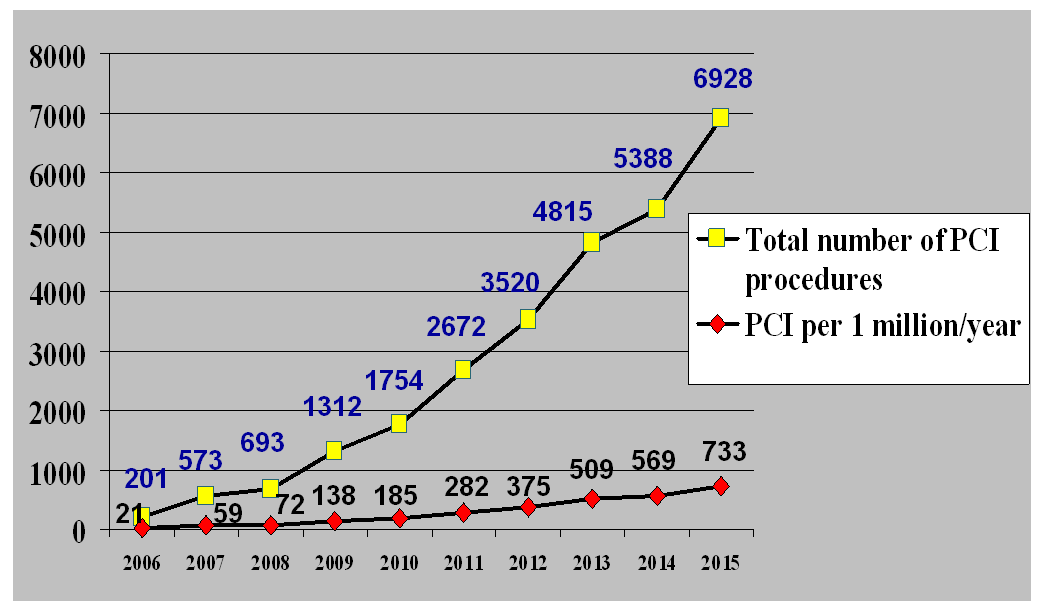
In the year 2011 a national program with a purpose of improving quality of the treatment for patients with acute MI was initiated in Belarus. At present time with the help of this program we organized a system for management of ACS. This made interventional management for ACS patients accessible in all regions of Belarus with 19 PCI centers involved (Fig. 2).

14 PCI centers currently manage ACS in a 24/7 regimen. With the adoption of the program during last seven years there was an increase in the number of STEMI patients who received reperfusion therapy and especially p-PCI (Fig. 3). The current number of p-PCI-procedures per 1 million of population is 311 (Fig.4). Due to location of PCI centers only in big cities, current p-PCI infrastructure can cover the territory with only about a 50% of total population. In regions where immediate interventional management isn’t available, the patients are managed with thrombolytic therapy (Streptokinase or Tenecteplase) or pharmaco-Invasive strategy.
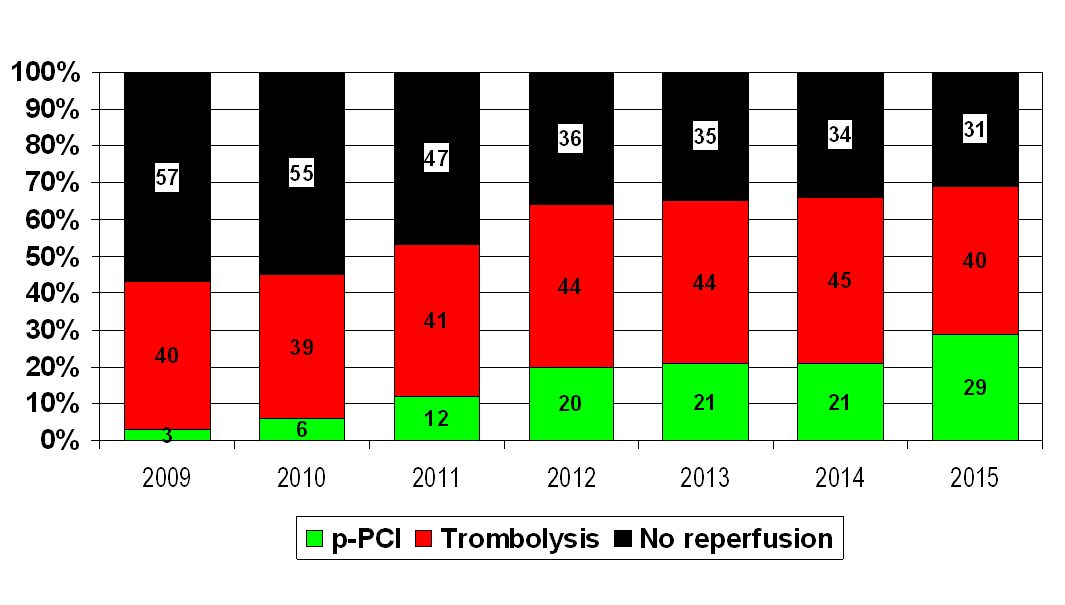
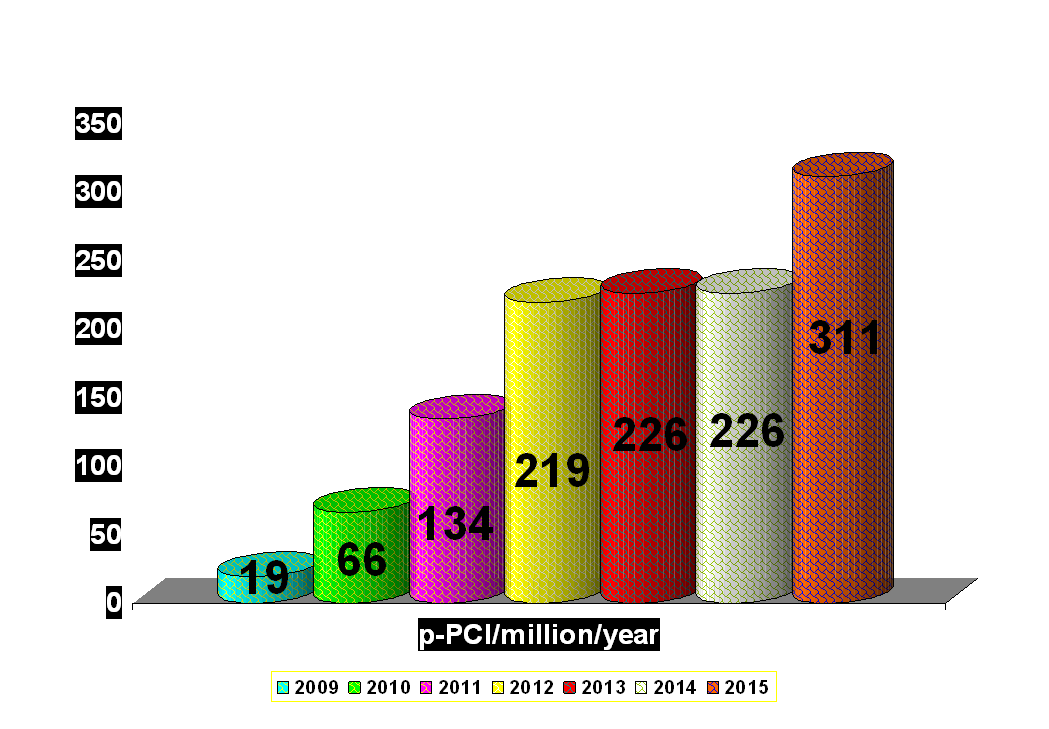
For the purpose of improving medical care for patients with ACS it is crucial to cover the rest of the country with p-PCI service. In order to make PCI accessible to the majority of population of the country, seven more centers are planned to be opened by 2020 (Fig. 5).
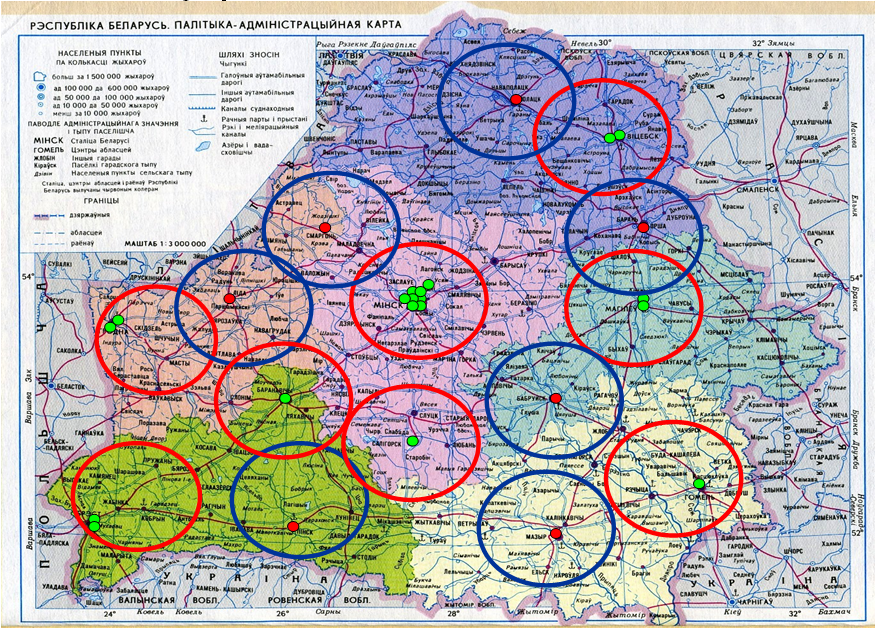
Aiming at increasing the availability of interventional treatment of ACS patients and as a result to decrease of mortality rate from the myocardial infarction to 10% within next 3 years, Belarusian cardiologists together with the Ministry of Health of The Republic of Belarus have developed a “road map” program.
Basic goals of the program:
- the creation of new inter-regional PCI centers;
- increasing the number of interventional procedures;
- development and implementation of health care quality indicators;
- spreading of pharmaco-invasive strategy to regions where direct transfer to p-PCI centers is geographically not possible;
- development and optimization of pre-hospital medical care in order to reduce reperfusion therapy delays;
- diagnostic optimization in patients with ACS without ST elevation and an increase in the availability of interventional procedures;
- overall reduction of the number of patients who do not receive any reperfusion therapy.
Oleg Polonetsky1,2, Valery Stelmashok2, Alexander Mrochek2
1. Country Champion, SFL Belarus; 2. Republican Scientific and Practical Centre of Cardiology, Minsk, Belarus



